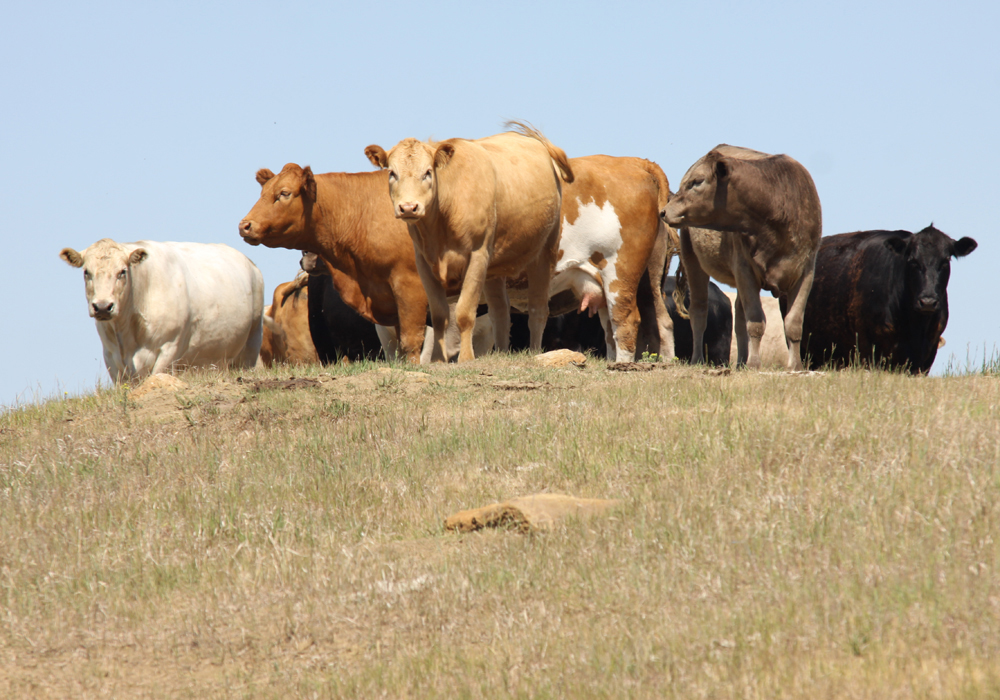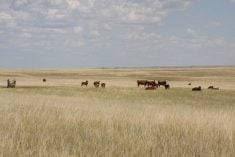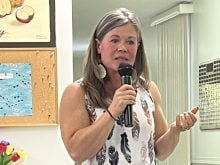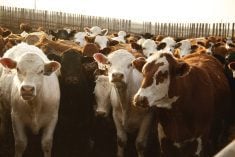The Canadian Cattle Association is monitoring dry conditions that have affected beef producers across the country, which might hasten shrinkage in the national herd that is already at its lowest since 1990.
“When you’re looking at food security and you’re looking at the lowest number since 1990, and the economic side of things and potential trade and where everything lies, we really need to emphasize on getting this situation corrected,” said CCA president Nathan Phinney.
The national herd, including calves, totalled 11.27 million this year, which is its lowest level since 1990 when it was 11.22 million, said the CCA, based on figures from Statistics Canada. The highest total during that period was 14.9 million in 2005.
Read Also

Short rapeseed crop may put China in a bind
Industry thinks China’s rapeseed crop is way smaller than the official government estimate. The country’s canola imports will also be down, so there will be a lot of unmet demand.
Record-breaking heat waves and drought in 2021 resulted in feed shortages that forced western Canadian beef producers to sell more cattle. It isn’t unusual for the industry to encounter a dry year, said Fred Lozeman, finance chair for Alberta Beef Producers.
However, he described what’s been happening in the last few years as outside the usual historical pattern.
“I’ve been farming for a little over 30 years now and we’ve had dry years in there, but they haven’t got strung together like they have.”
Phinney said most cattle in Canada are in Alberta and Saskatchewan “where it’s the driest and we’re used to dealing with some of these conditions, but it’s been back to back to back… so we’ve had to do a slight reduction in cow numbers, and feed inventories have dwindled down over the last couple of years of dryness, so it’s having a major effect with the surplus of feed available.”
Dry weather this spring wasn’t limited to the Prairies, he said.
“It’s one of those things that’s quite critical and unlike other years, it’s kind of widespread coast to coast with some rain or pockets in between,” he said.
“There are areas where there’s still a chance that we’ll be able to salvage something. Some are in dire straits and in those areas, we continue to work with governments of all levels to see what can be done, and there’s no magic bullet to solve this issue. It’s a Mother Nature issue that we need to get some moisture.”
The CCA held a national roundtable June 13 with managers in each of the provinces to get updates, said Phinney during an interview June 14.
“And in some areas, rain has fallen and there seems to be some moisture coming. Then again, it’s been spotty.”
Beef industry leaders are always pushing to improve risk management programs so that governments react in a timelier fashion to help cattle producers, said Phinney.
“But I mean … the feed just isn’t there, and we needed a good growing season to get it, and there’s big competition right now all over North America for that feed, so until we get to a position where there’s abundance out of this, this is going to continue.”
Further complicating the situation are water restrictions affecting irrigated producers because of leaks in the canal system of the Lethbridge Northern Irrigation District. It includes Feedlot Alley in southern Alberta, said Leighton Kolk, chief executive officer of Kolk Farms Ltd. near Picture Butte.
The area contains up to 150 cattle feedlots with a total capacity of about 800,000 head, he said.
“If you took all of Canada’s beef industry, we fit just over 70 percent of it in Alberta and of the Alberta 70 percent, about 70 percent of that is in southern Alberta irrigation.”
Kolk Farms uses irrigation to grow hay and silage crops for its operation, he said. Although it must currently rely on less than 25 percent of its usual water allotment at a time when southern Alberta has been facing high temperatures and low rainfall, he called it a developing situation.
“Had you phoned me two weeks ago, I would have said it could cripple the feedlot industry here for a year or more…,” said Kolk during an interview June 16. “If we get some rains, which we’ve had a couple of little scattered showers now, and if we get a few things go right and the canal holds, we won’t be packing up and moving out, we’ll just run with a little reduction in feed supplies.”
However, drought conditions in the County of Stettler in central Alberta east of Red Deer prompted officials to declare an agricultural disaster June 14. It is the first municipality in the province to make such an announcement this year.
“We’re seeing exceptionally large numbers of livestock being dispersed at auction marts for this time of year, and producers are contacting us to report they are out of feed, cannot afford feed and looking ahead and realizing at this point that the probability of growing feed to support their operations is very, very slim,” said Reeve Larry Clarke in a statement.
Dry conditions in Saskatchewan near the Alberta border as far north as Kindersley were getting serious because of a recent run of hot weather, said chair Keith Day of the Saskatchewan Cattlemen’s Association. There is no reserve moisture for early seeded forage crops that have already lost some production, with some areas facing their fifth or sixth year of drought, he said.
Rain needs to happen in the next 10 days, he said in an interview June 13. “And we need a good couple of days of soaking rain to make a difference.”
















